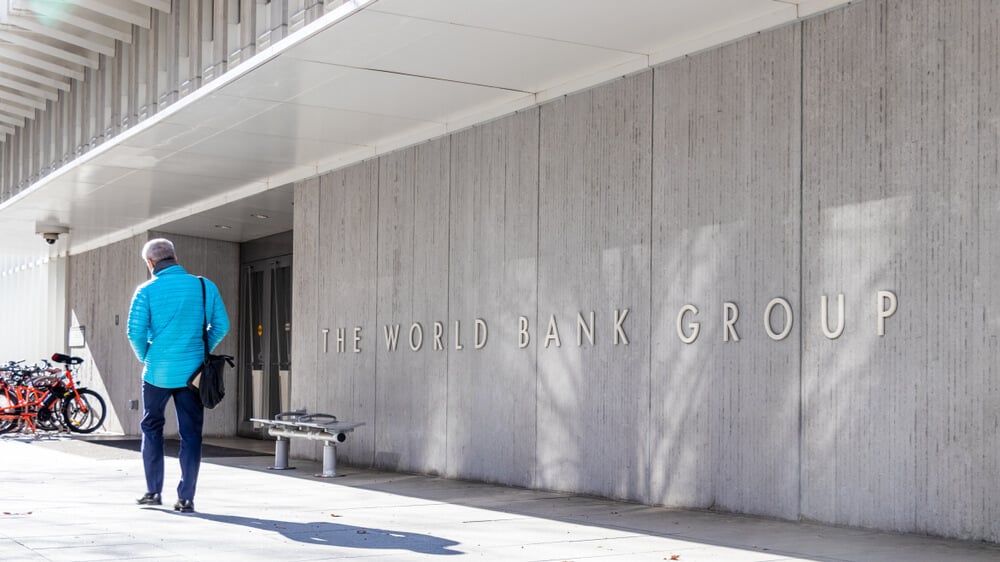The lifting of Trump's tariffs immediately caused the oil price to rise by more than one per cent.
The American decision brought numerous uncertainties but also opportunities in the energy markets.
On 28 May, the Court of International Trade ruled that the ‘Liberation Day’ tariffs introduced by Donald Trump exceeded constitutional powers. The introduction of comprehensive tariffs on imports from partner countries was blocked, leaving only tariffs on steel, aluminium and cars in place.
Reactions in Washington were mixed. The White House announced the appeal and criticised the judges for allegedly having not been elected by the people. They claim that the president has the right to safeguard the national economy.
Republicans in Congress are considering legislative changes that would allow the future introduction of tariffs, while Democrats are calling for greater control of the executive branch.
This imbalance between the judicial, legislative, and executive branches further complicates trade policy.
Financial markets respond to ruling, but caution remains
The ruling immediately increased risk appetite on the financial markets. Stock markets in Asia rose; the British FTSE rose by 1.2 %, the Japanese Nikkei by 1.7 %, and the Korean KOSPI by 1.8 %.
US Nasdaq futures rose 2%, supported by favourable reports from technology companies. Investors saw the ruling as a signal that uncertainty is easing but remain cautious about the possibility of an appeal.
The ruling had the most immediate impact on the oil price. Brent crude oil rose from USD 64.90 to USD 65.68 (+1.2 %) per barrel in Tokyo, while US WTI (West Texas Intermediate) rose from USD 61.84 to USD 62.62 (+1.3 %) per barrel.
New legal manoeuvres could lead to targeted restrictions
International energy analysts point out that the price increase is only temporary. Investors welcomed the ruling, but they expect new legal manoeuvres that will lead to targeted restrictions.
At the same time, OPEC+ announced that it was considering increasing production by 411,000 barrels per day in July, which would ease the pressure on supply. The announcement of further US sanctions against Russian oil and the review of exports from Venezuela are causing further uncertainty.
Different trends
Data from the API (American Petroleum Institute) showed a decline in commercial oil inventories in the US last week, which caused optimism.
However, the EIA (Energy Information Administration) reports due at the end of June could show a different trend, particularly if summer consumption exceeds production. The key balance will be between judicial decisions, OPEC+ dynamics and inventory reports.
Extraordinary economic measures must be clearly defined in the law and not left to the discretion of the president
Judicial oversight of the executive branch sends a clear message. The application of extraordinary economic measures must be clearly defined in the law and not left to the discretion of the president.
This may also have an impact on other sectors, for example, if tariffs are introduced on imports of solar panels or critical minerals alter the course of the energy transition.
European countries are following the development of events. Berlin stated that it would continue its cooperation with the USA but expects consultations before new measures are taken. China continues to invest in oil projects in the Middle East and is trying to diversify its energy sources.
Potential disruptions in exports
More important are the circumstances that are slowly emerging at the lower end of the industrial chain of capital.
Refiners are now renegotiating long-term supply contracts and trying to secure protected prices, while margins are under pressure due to fluctuations in raw material costs and changing transport expenses.
Analysts point out that investment in storage capacity and flexible contracts for "just-in-time" distribution could become a competitive advantage over the next two years.
 The World Bank estimates that the average price of petrol could increase by 5% in the first half of July if there is a permanent supply freeze
The World Bank estimates that the average price of petrol could increase by 5% in the first half of July if there is a permanent supply freeze
Banks and financial institutions are also adapting their lending strategies. A planned interest rate hike by the Federal Reserve in response to inflationary pressures is expected later this year, which will impact the cost of capital for energy projects.
The higher cost of money may discourage investment in high-risk oil and gas projects but will encourage a greater focus on long-term, economically viable renewable energies.
In Europe and Asia, end consumers are experiencing the impact of rising fuel prices. The World Bank estimates that the average price of petrol could increase by 5% in the first half of July if there is a permanent supply freeze.
This poses a political dilemma for governments as they try to protect the purchasing power of citizens while at the same time encouraging energy investment.
The biggest concern for investors continues to be the potential disruption of exports from major producers.
If a new wave of sanctions against Russian crude oil disrupts flows to a significant extent, the market could react by pushing prices above USD 80 per barrel. In such an environment, diversification of investment portfolios and hedging through derivatives become necessary tools for institutional players.
In the coming period, three key variables will be monitored: the legal outcome of the appeal proceedings in Washington, the OPEC+ decisions on production, and the EIA and API statistics on inventories. Analysts assume that this threefold interplay will determine the range of price fluctuations over the next six months.